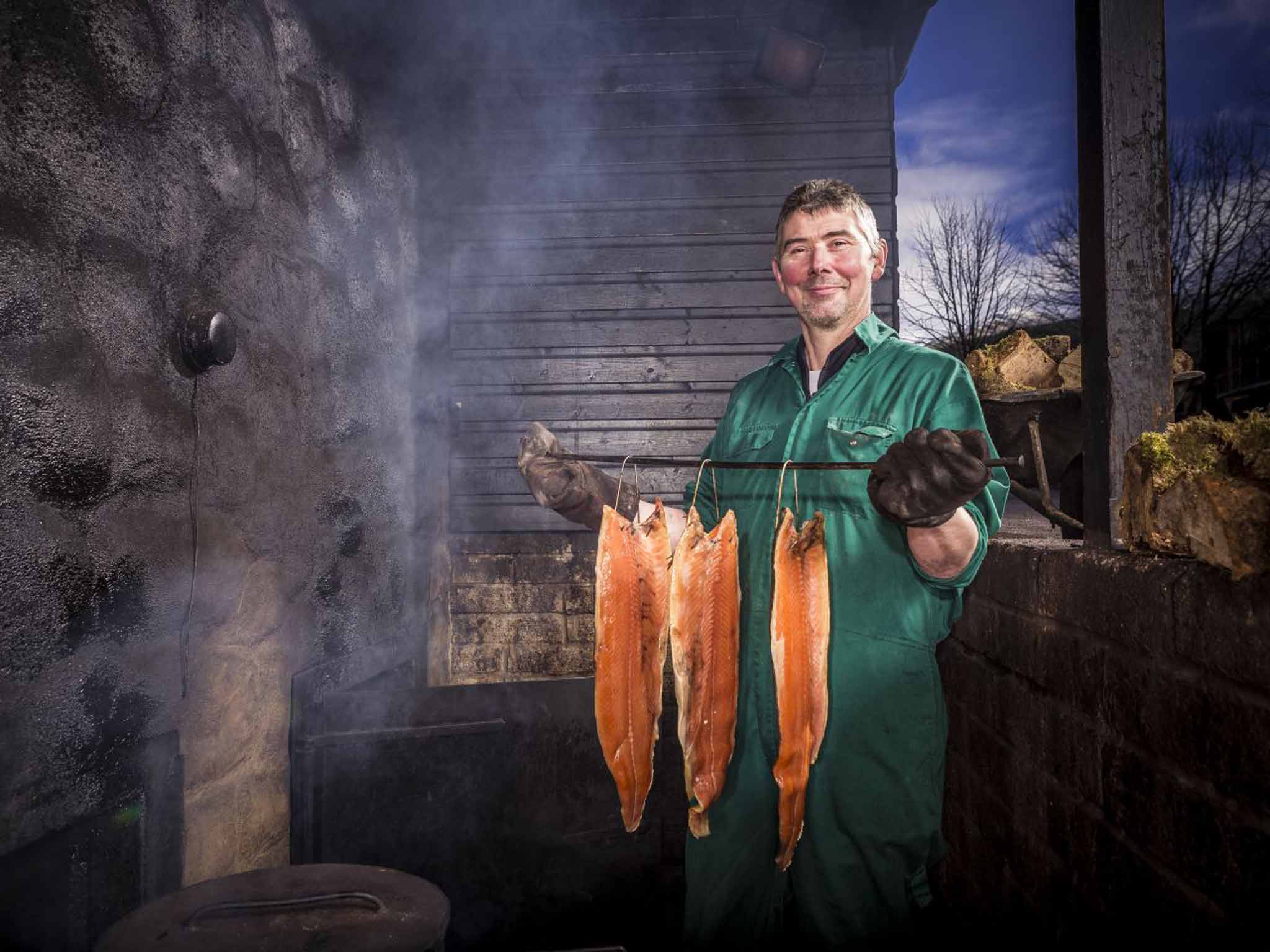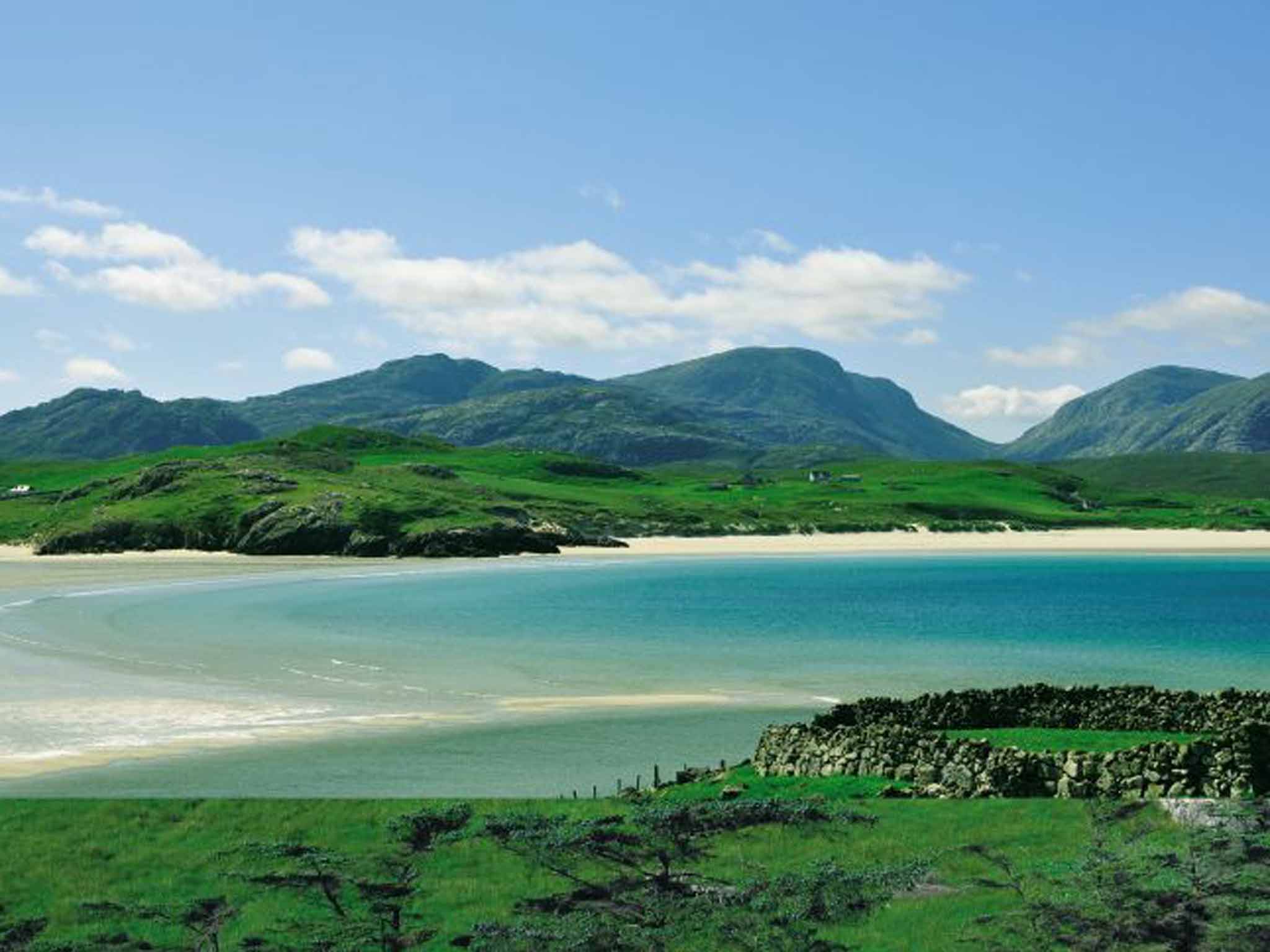Christmas smoked salmon: What to look for and how best to prepare your catch
Cereal just doesn't cut it when it comes to breakfast at Christmas. Silky smoked salmon is a far more festive way to begin the day (or to kick off lunch), but finding the right fish is key.

Your support helps us to tell the story
From reproductive rights to climate change to Big Tech, The Independent is on the ground when the story is developing. Whether it's investigating the financials of Elon Musk's pro-Trump PAC or producing our latest documentary, 'The A Word', which shines a light on the American women fighting for reproductive rights, we know how important it is to parse out the facts from the messaging.
At such a critical moment in US history, we need reporters on the ground. Your donation allows us to keep sending journalists to speak to both sides of the story.
The Independent is trusted by Americans across the entire political spectrum. And unlike many other quality news outlets, we choose not to lock Americans out of our reporting and analysis with paywalls. We believe quality journalism should be available to everyone, paid for by those who can afford it.
Your support makes all the difference.Christmas wouldn't be Christmas without a bit of indulgence in our food and drink. Sales of luxury products such as champagne and smoked salmon rocket at this time of year, yet while, when we buy a bottle of champagne, we can be sure that it has been made in a certain way, the same is not true of smoked salmon. There is a world of difference between mass-produced salmon and good-quality salmon that has been traditionally smoked with respect and care. That is the “proper” smoked salmon, which is so wonderfully fresh-tasting, delicious and delicately flavoured and a real festive treat.
At the other end of the scale are the corner-cutting, margin-protecting smoked salmon competition that after more than a few forkfuls can taste like something to be endured, not enjoyed. Such considerable differences in texture and flavour of the smoked salmons we buy are the direct result of the differences in their provenance and process. Choosing carefully matters. The real thing doesn't come cheap – up to £5 per 100g, compared with as little as £1.50 for a basic version – but as an occasional luxury, it's well worth shelling out for. And not just at Christmas. Enjoying the real deal a few times a year is surely better for the soul than eating the over-salted, orange-hued stuff every week.
Where the fish comes from is the first thing to look out for. The esteem of “Scottish” on a smoked salmon label is so high that some packs have that as the headline even though it says in smaller type on the back that the fish is actually from Norway and only smoked in Scotland. Not that there is anything particularly wrong with Norwegian fish. The issue is really one of freshness, given how many days it takes to transport the salmon to the UK before any processing starts.
Machine-operated factories are not troubled by that time lag. Their machines are not able to cut the salmon until rigor mortis has subsided, so they would have to leave the fish alone for a few days wherever it came from. It is the hand-operated smokeries, where fish can be sliced in two with all the simplicity of a big knife, which use the freshest fish.
Once cut, salting the salmon sides to extract moisture is the first stage in preserving them. In a traditional smokery they are strewn with sea salt on trays. As much as 10 to 15 per cent of the weight of the fish can be extracted in the salting. Losing that much weight of smoked salmon from each fish is the last thing a commercial mass-producer wants. Loss in volume equals loss in profit. Consequently, many of the cheaper, mass-produced salmons are not salted at all. Instead they are covered in brine or injected with brining solution. Sugar then has to be added to the salmon just to counterbalance the impact of the brining on the salmon's flavour. Which (slightly confusingly, I know) isn't to say that sugar on the ingredients list of smoked salmon is necessarily a bad thing. Many traditional smokeries use that salting stage to add other flavours to the salmon. That could be juniper, herbs, whisky – or indeed sugar. The big difference is that they are doing it because they want to achieve a sweeter-tasting smoked salmon, not because they are having to counteract something in the processing.

After salting comes the cold-smoking. If it is being done properly – rather than being given the mass-producers' equivalent of a smoke-flavouring spray tan – the salmon hang or lie in the smoking chamber for 18 to 20 hours or so to take on board the smoke, which is carefully controlled at 20C–30C. Some smokeries, such as Dunkeld in Perthshire or Creelers on the Isle of Arran, decide to use this stage of the process as their opportunity to enhance the salmon's flavour. Both of those include burning woodchips that have come from whisky barrels to give extra intensity to their smoke.
Anyone whose taste buds are less smokily inclined and who prefers a greater emphasis on the salmon flavour itself should look to London's prestigious H Forman & Son – one of the few smokeries left in the city producing “London Cure” smoked salmon that, almost surprisingly, tastes of salmon. The smoke is so subtly controlled you barely taste it. It is very different from the smokier Scottish smoked salmons. So different that London Cure is imminently going to be joining iconic foods such as Arbroath smokies, Parma ham and champagne itself in the elite group of Protected Geographical Indication status products.
Lance Forman is the fourth generation of the family at the helm of this business. From the age of six, he was able to carve smoked salmon with skill, and having grown up immersed in the business he is passionate about the quality of the smoked salmons H Forman produces. When he gave me a tour of H Forman's smokery, he was equally passionate about educating shoppers to understand more about the smoked salmon they buy, and he gives the impression of a man who is rather fed up with people complaining that smoked salmons can be greasy or slimy, when what they are talking about are only the salmons subjected to corner-cutting processes. Lance's advice when faced with a multitude of smoked salmons is to take a good look at the fish itself. It should have a natural sheen but not be in any way oily. There will be clues on the packet to where the salmon is from and how it has been processed, but trust your eyes and avoid anything bright or verging on orange, which will, very probably, have been dyed. Good smoked salmon should be a natural-looking pink.

I rather like Lance Forman's tip on how to serve smoked salmon, which is to “put the lemon back in the fridge”. Lemon is needed only to cut through any greasiness, but if the smoked salmon is a good one, you won't need to do that.
I certainly think that you can get the most out of the salmon's flavours by keeping things simple and balancing it out with strong partners. Simplest of all is just to give smoked salmon a good grinding of pepper and accompany with buttered walnut bread. Maybe a few caperberries, too. For parties, smoked salmon on blini or potato-flour pancakes are great with a dollop of egg-heavy mayonnaise that has had some grated horseradish stirred through it.
Plated-up folds of smoked salmon make for a handy prepare-ahead Christmas lunch starter when served with peppery watercress and a super-simple sauce of crème fraîche puréed with cloves of roasted garlic and dill. As for the Christmas Day breakfast, for which so many of us have smoked salmon, you might be surprised at how the otherwise-kitsch Buck's Fizz gives smoked salmon some citrus brightness but manages not to overwhelm it.
At any other time, smoked salmon is best served with white burgundy or champagne –and the knowledge that if it is from one of the smokeries here (or any other good, traditional smokehouse), your Christmas socks might be knocked off at how delicious proper smoked salmon can be.
Five to try
All of these smokehouses do UK delivery
Creelers
Creelers, based on the Isle of Arran, cold-smokes with the shavings of malt whisky barrels to achieve a distinctive flavour. That won its cold smoked salmon two stars at the Great Taste Awards 2015. Available from Co-op stores across the West of Scotland and the Earthy shops in Edinburgh.
creelers.co.uk / 01770 302797
Dunkeld
This small Perthshire smokehouse is on the banks of the river Tay, one of Scotland's most famous salmon rivers. Dunkeld supplies its silky-textured smoked salmon to local outlets such as The Scottish Deli in Dunkeld and Pitlochry, and Provender Brown in Perth. Also Cranachan & Crowdie on Edinburgh's Royal Mile.
dunkeldsmokedsalmon.com / 01350 727639
H Forman & Son
Top-quality, super-fresh Scottish salmon is trucked down to London overnight to H Forman's new smokehouse in the shadow of the Olympic Stadium. The factory may be modern but the “London Cure” processes remain very traditional. Available at Ocado, Booths, and selected branches of Waitrose and Sainsbury's.
formans.co.uk / 0203 601 5464
Inverawe
Inverawe describes its smoked salmon as having a faintly “fruity” flavour. It is staying tight-lipped, though, on which ingredients are used in the smoking process to achieve it. Available online from Ocado and Waitrose, and to Abel & Cole subscribers.
smokedsalmon.co.uk / 0344 8475 490
Uig Lodge
From the most north-western point in the UK, on the Isle of Lewis, Dickon Green runs a small family business that proudly provides employment for its small rural community. Winner of two stars at the Great Taste Awards 2015. Available at Partridges in London and Selfridges; also farm shops and delis across the country, such as Franklins Farm Shop in East Dulwich and The Pear Tree in Sherborne.
uiglodge.co.uk / 01851 672396
Join our commenting forum
Join thought-provoking conversations, follow other Independent readers and see their replies
Comments